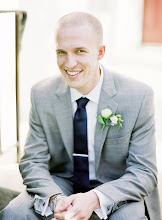
Appeared in the April 2008 edition of DownBeat, an internationally circulated jazz magazine; photo by W. Eugene Smith, courtesy of the Center for Creative Photography, University of Arizona.
After a few listens, Thelonious Monk determined exactly what he wanted. It was 1959, and he and arranger Hall Overton were sitting in a dingy Manhattan loft, spinning his trio’s recording of “Little Rootie Tootie” and trying to orchestrate the number for tentet.
Monk’s revelation: “Let the band play the whole thing—the whole thing like it is,” he said. “Where harmony is, you put harmony.” His spur-of-the-moment idea—the ambitious, full-band transcription of the whole tune, frenetic solo included—would become the centerpiece of his historic Town Hall performance and Riverside recording.
Most such moments of spontaneous creative conception fade quietly into annals of time. But this moment, along with more than 3,000 hours of rehearsals, jam sessions and mundane urban existence, was captured on tape by photographer W. Eugene Smith.
Smith had holed himself up in the loft with a group of artists and musicians following a nervous breakdown. With the building’s four pianos attracting a steady flow of players, he lined the place with microphones and took nearly 40,000 photographs between 1957 and 1965, essentially turning the loft into an audiovisual study of post-war underground music making.
“I think it is the largest collection of recorded material this major anywhere in the country,” said Robin Kelley, a professor of American studies and ethnicity at University of Southern California. “It’s a lifetime’s worth of work.”
The building became a jazz nerve center. Overton invited over musicians like Rahsaan Roland Kirk, Bill Evans and Paul Bley, who led late-night jam sessions. Smith hovered in the background, snapping photos and letting the tape roll.
“The guy would hug you twice, take your picture and leave you alone,” Bley said in an interview. “The taping was a covert operation.”
Smith’s 1,740 reels of tape went unheard for many years. Following his death in 1978, they were brought to the Center for Creative Photography at the University of Arizona. Sam Stephenson, a research associate at Duke University’s Center for Documentary Studies, stumbled upon the tapes in 1998 while researching a book on Smith.
“In the photography world, the official view of Smith at this point was that he had lost his mind,” he said. “So nobody thought there was anything worthwhile on these tapes.”
After securing grants to preserve the reels and transfer their contents to CD, Stephenson began to sift through the audio gold mine. The Jazz Loft Project was born.
Listening to the tapes is like taking a sonic tour through mid-century jazz and the lives of those who played it. You hear Monk and Overton readying the tentet for Town Hall. You hear Zoot Sims egging on his compatriots to blow through one more tune. But you also hear brilliant passages from unknowns like Eddie Listengart, whose burning saxophone solos would have garnered wide recognition were it not for his severe schizophrenia.
Drummer Ronnie Free is another such forgotten son of the loft scene.
“It was such a fantasy world in some respects,” he said. “You’d be popping pills, smoking pot and drinking booze, and you never knew who was going to show up.” Free lived in the building and served as its de facto house drummer, only to disappear into relative obscurity after battling drug addiction.
Stephenson and colleague Dan Partridge, who have listened to and cataloged more than 1,500 hours of tape so far, light up when talking about Free and the other underground musicians who now have a documented place in jazz history. They’re also quick to point out the major historical revelations of the tapes—that Monk was much more involved in his Town Hall arrangements than previously believed or that Overton’s enormous influence on both jazz and classical music (acclaimed minimalist composer Steve Reich was among his students) has been understated among critics.
The researchers have interviewed more than 400 musicians, artists and others who passed through the building. In many cases, they play the tapes for their interviewees, who help discern their contents and recount battle stories—uncovering the layers of contextual tapestry that surround the music.
Much of that tapestry appears on the tapes. Smith recorded television footage of Martin Luther King, Jr. announcing his Selma, Ala., march and Walter Cronkite discussing Kennedy’s assassination. He also taped thousands of hours of conversations, late-night radio shows and even such banalities as cats meowing and drills buzzing.
As documentarians, Partridge and Stephenson take a particular interest in this non-jazz material, noting that jazz historians will have a chance to dissect and study the music once it’s available in a public archive. The project will also culminate in 2009-’10 with a book, traveling exhibition and WNYC radio series.
“The non-jazz stuff makes the jazz even more valuable,” Stephenson said. “When you release the jazz history angle from this story, the characters become not just jazz musicians, but really deep, complicated characters that could’ve been in a Eugene O’Neill or Tennessee Williams play. It just so happens they play great music.”
